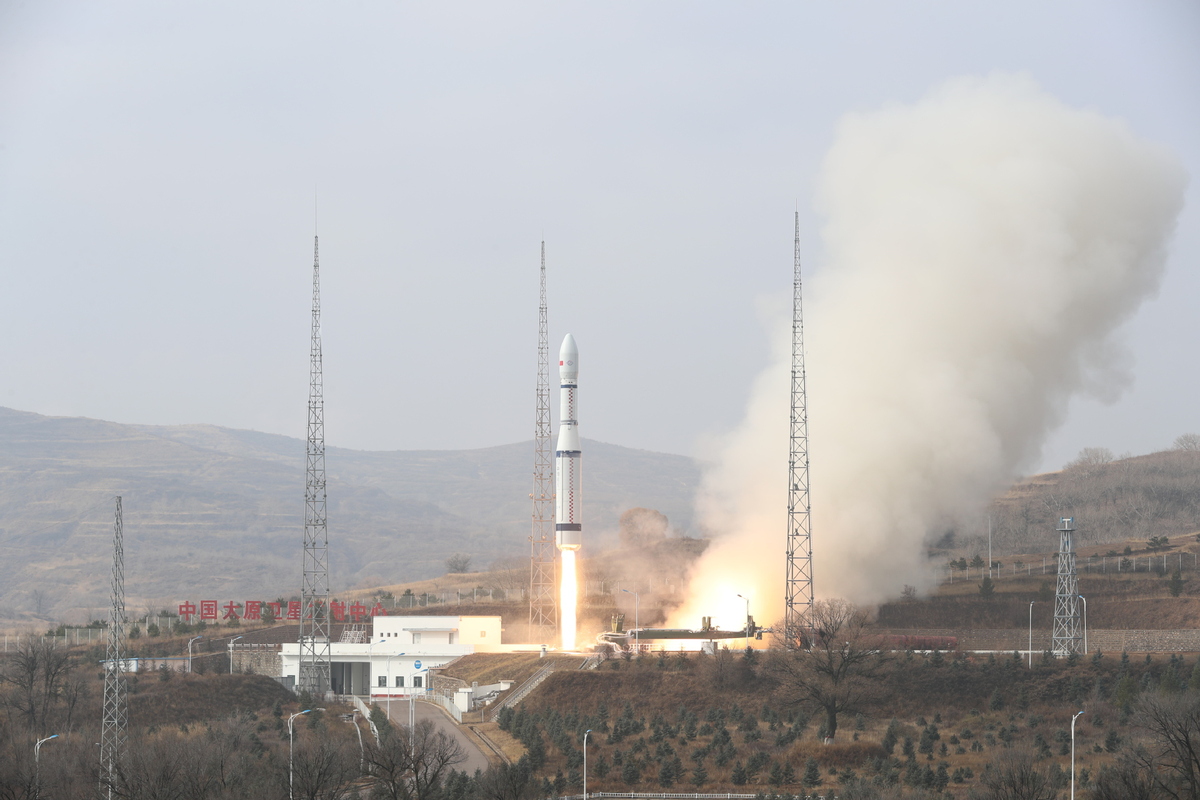
A science satellite is launched from the Taiyuan Satellite Launch Center in Taiyuan, North China's Shanxi province, Nov 5, 2021. The satellite was launched by a Long March 6 carrier rocket at 10:19 am (0219 GMT) and entered the planned orbit. [Photo/Xinhua]
China launched a science satellite on Friday morning to help realize the United Nations' Sustainable Development Goals, according to China Aerospace Science and Technology Corp, or CASC, the country's leading space contractor.
The State-owned company said in a brief statement that a Long March 6 carrier rocket blasted off at 10:19 am from the Taiyuan Satellite Launch Center in Shanxi province and later placed the Wide-Eye Geoscience Satellite into its preset orbit.
Designed and built by the Chinese Academy of Sciences, the satellite is tasked with conducting precision space-based surveys of fuel consumption, urban construction and coastal environments in densely populated regions to provide data support to the research of humankind-nature interaction and sustainable development. It is the world's first satellite dedicated to servicing the UN 2030 Agenda for Sustainable Development, according to the academy.
The spacecraft's development was sponsored by the academy's Big Earth Data Science Engineering Program and is the first to be operated by its International Research Center of Big Data for Sustainable Development Goals.
Designers said the satellite is equipped with multiple advanced technologies and can quantitatively record interaction between humankind and nature.
They said the craft is carrying three payloads-a thermal infrared imager that can detect a temperature change of 0.2 C on the Earth's surface; a glimmer imager responsible for collecting lighting distribution on the Earth to study residential patterns and economic performance in various regions, and a multispectral imager capable of accurately monitoring polluting incidents in oceans.
"The satellite's deployment marks a major stride by China in applying its advanced space technologies to boost sustainable development around the world. It will allow scientists and policymakers to obtain data in a faster and more efficient manner," said Wang Yanan, editor-in-chief of Aerospace Knowledge magazine.
Friday's launch was the 395th mission of the Long March rocket family and also marked the eighth flight of the Long March 6, which was designed and built by the Shanghai Academy of Spaceflight Technology, a CASC subsidiary.
The 29.3-meter rocket is capable of placing about 1 metric ton of payload into a sun-synchronous orbit 700 kilometers above ground. Its main propulsion is a 120-ton-thrust engine that burns liquid oxygen and kerosene.
The rocket has now completed all of its four scheduled flights in 2021, according to CASC.
CASC plans to make more than 40 launch missions this year, including those for the nation's space station program. It has so far carried out 38 launches, all of which were successful. The company's space program planners said 2021 will be the busiest year for it in terms of launch activity.
In 2020, the space giant conducted 34 launches, including three made by Long March 5-series rockets that carried into space China's next-generation manned spacecraft, the country's first independent Mars probe and the Chang'e 5 lunar sample-return mission.